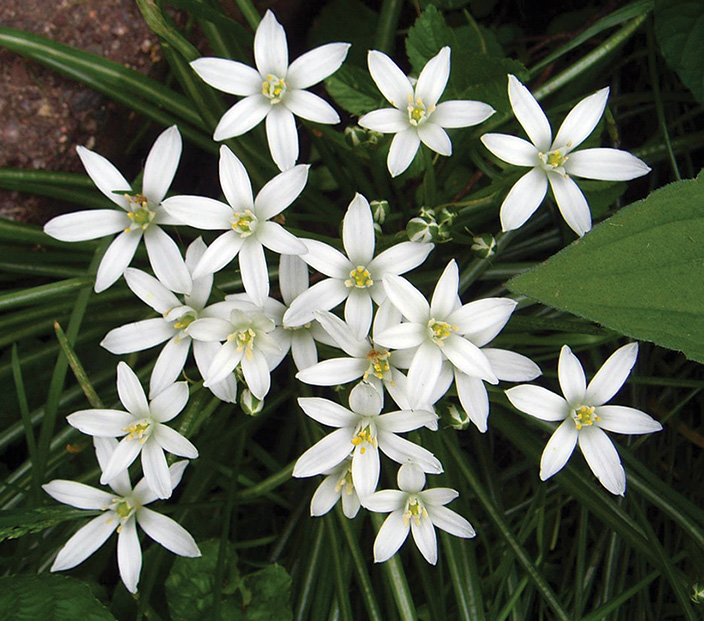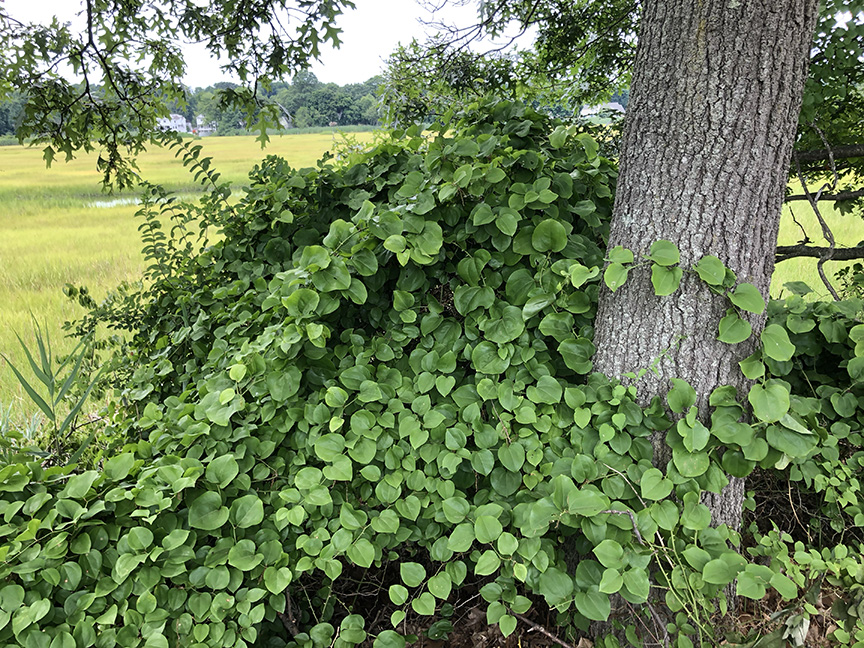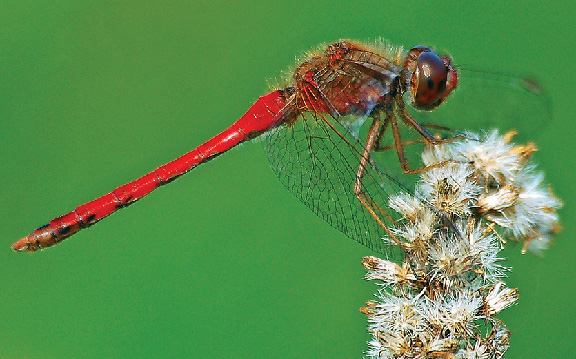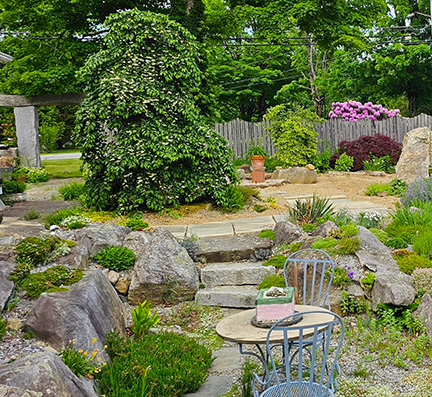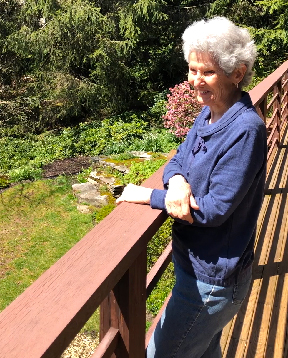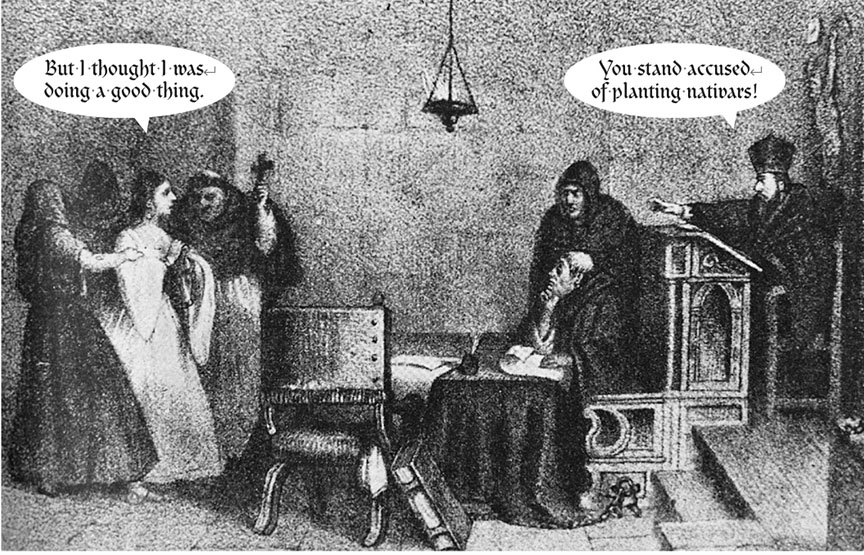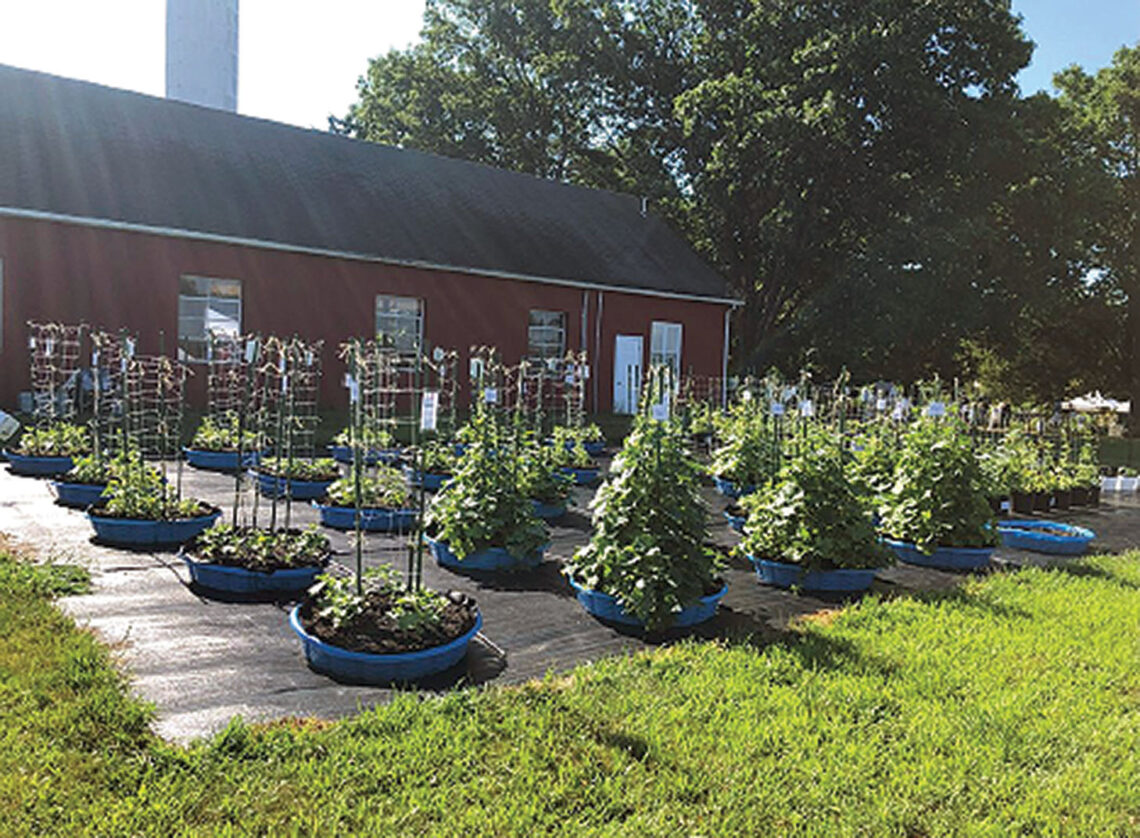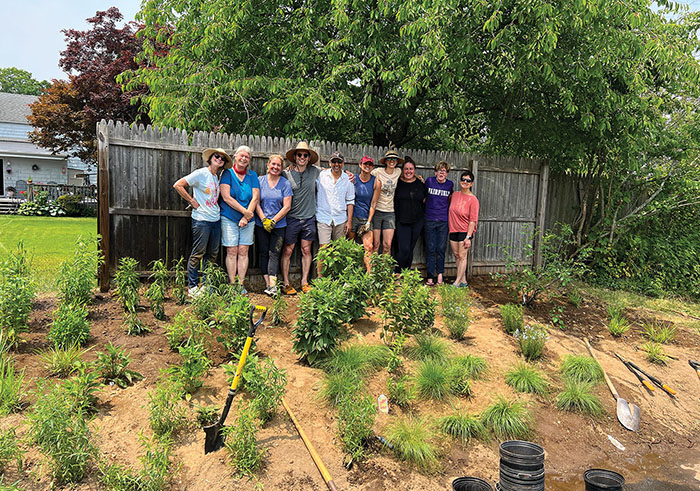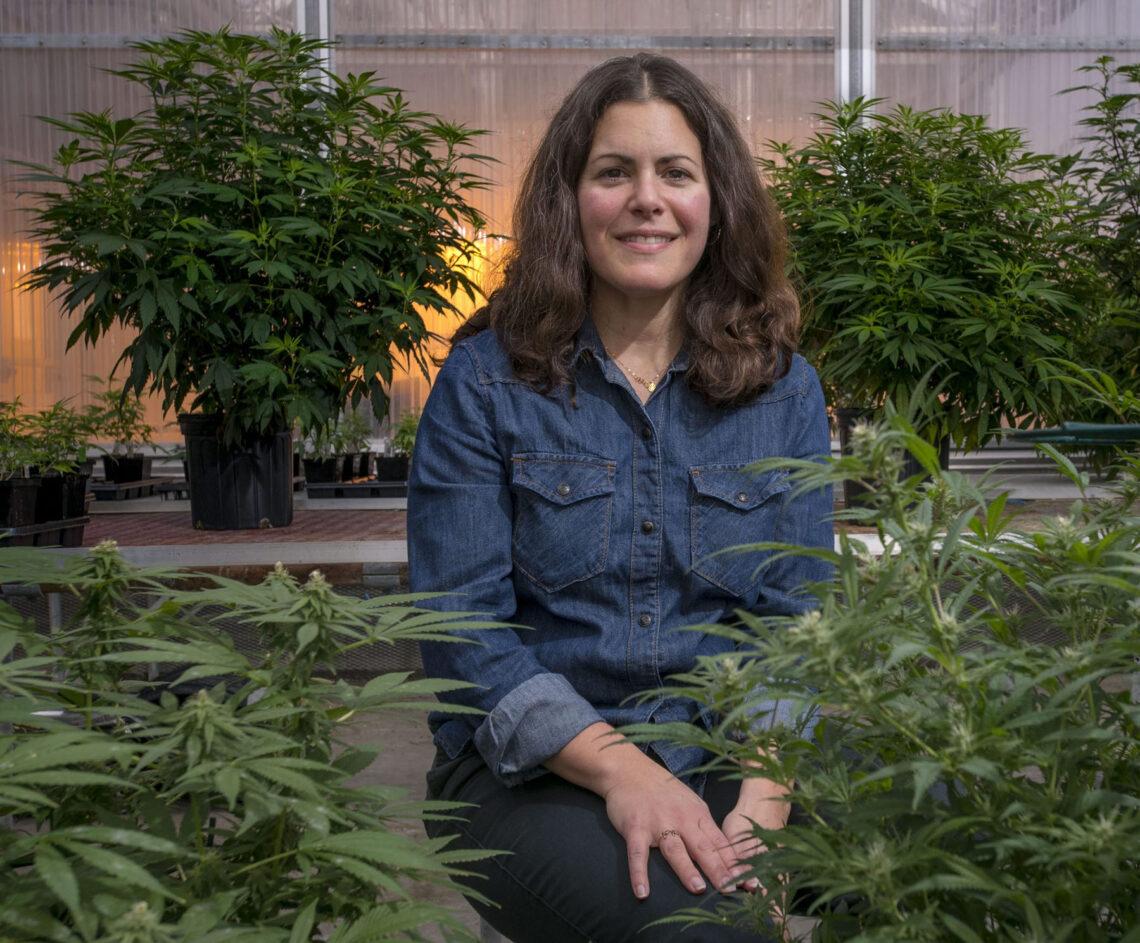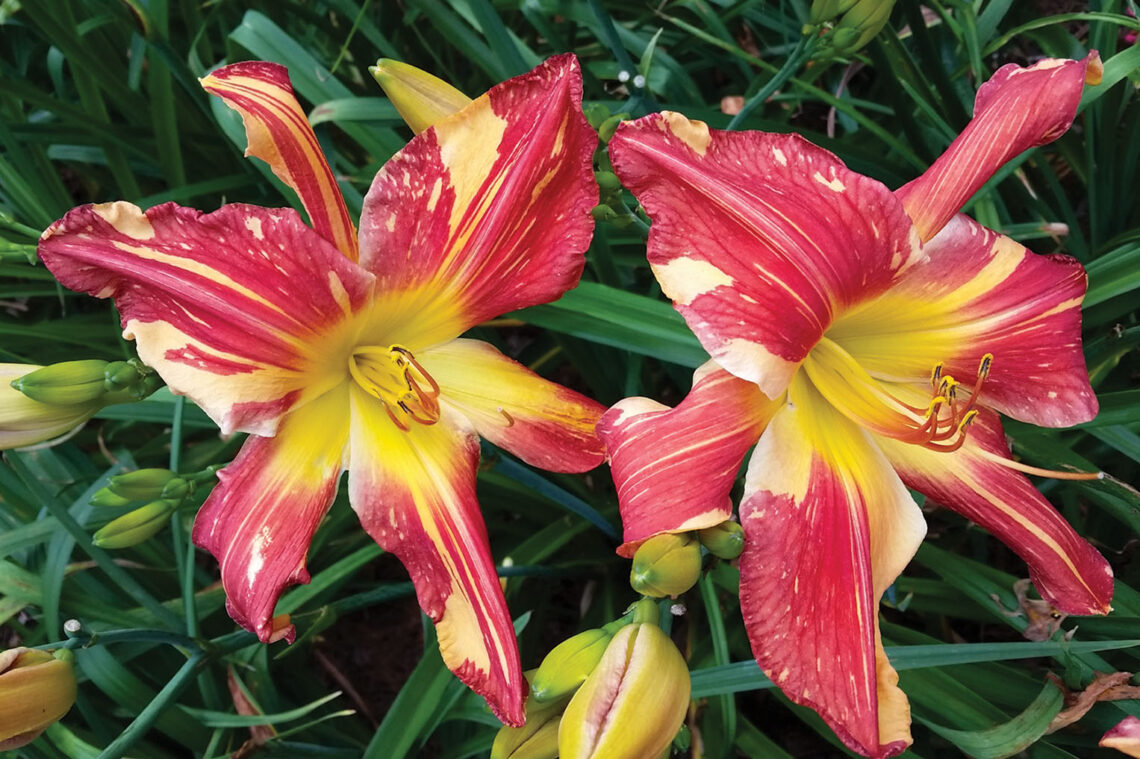By Will Rowlands – (All photos by Leslie J. Mehrhoff, UConn via bugwood.org) The Connecticut Invasive Plant Working Group (CIPWG) has announced additions to Connecticut’s official list of invasive plants. We applaud these changes but, alas, the horse has already left the barn as far as most of these plants are concerned. To make matters worse, most of the changes won’t take effect until Oct. 1, 2028 and Oct. 1, 2030. This will allow nurseries and growers time to try and sell off their existing stocks of invasive plants before the new law goes into effect. To be blunt, ecologically sensitive establishments should have phased out most of these plants…
-
-
Thuggish Greenbrier
By Will RowlandsWe have a new problem plant in Fairfield but we can’t call it invasive because it’s a native! The culprit is Smilax rotundifolia, commonly known as roundleaf greenbrier or common greenbrier. Arthur Haines in Flora Novae Angliae says it’s found all over New England, except Vermont. It grows in dry-mesic or mesic forests, woodlands, fields and pond borders. It’s also found along the moist edges of swampy woods, in Christmas tree plantations and orchards. It may be a native but Teri Dunn Chace includes it her book, How to Eradicate Invasive Plants. It’s also included in Weeds of the Northeast by Richard Uva et al. “Its pliable green…
-
Ditch the Praying Mantis
European or “Praying” mantis (Mantis religiosa) has been the official state insect of Connecticut since October 1, 1977. The praying mantis is not native to Connecticut, however, as it comes from Northern Africa and Southern Europe. It was introduced in the United States in the 1890s as a way to control pests in the garden and is even kept as a pet. Unfortunately, this mantid also feeds on a large number of beneficial pollinators and other native insects, including caterpillars, moths and butterflies. It can consume prey up to twice its size. I have not been a fan of them since I was a teenager and stumbled across a description…
-
Rock Garden Styles
By Elisabeth Zander Rock gardening focuses on growing interesting plants from around the world in one’s garden. Yes, they are natives, from worldwide alpine peaks down to bogs, woodlands and deserts. Usually small in stature, the size of the plant depends on the scale of your garden. While it is a new art form in the long history of gardening, it gained popularity here in Connecticut during the last century in the 1940s. I became enchanted by it during the late 1980s, when I lived in Watertown. At that time my house had a north-facing grassy bank that was almost dangerous to mow. The slope was quite steep. Luckily for…
-
Geraldine’s Garden
In the woods of Fairfield, near the Merritt Parkway, Geraldine Klein Robbenhaar has been creating a garden. Geraldine called me out of the blue in May of 2020, as we were adapting to pandemic pandemonium, and her offer of a garden tour was gratefully and immediately accepted. Yes, please! Visiting her three-acre property is not a 10-minute affair, and we lingered for several hours. She was eager to share, and I think sharing my delight at each new perspective and planting was good medicine for us both during such weird times. The gently rolling, heavily wooded landscape of this Fairfield property provides Geraldine with the basic materials to pay tribute…
-
Of Cultivars, Nativars & Varieties
By Will Rowlands We’re hearing a lot these days about “native shaming” and even “cultivar shaming.” It’s even become a meme. People are getting grief if they plant anything other than natives. Some are even catching flak if they use anything besides “straight-species,” “true native” or “wild type” plants in their gardens. It’s gotten to the point where growers are wary of using the term cultivar or nativar. Just to be clear, we are proponents of native plants, organic gardening and biodiversity and have been since we took over the magazine in 2010. We are also opposed to the use of invasive or genetically engineered plants. Even so, we find…
-
CAES Research Update
Pollinator Conservation – Monarch, Butterflies & BumblebeesPollinator populations have been declining for the past several decades. One of the causes we, as Connecticut gardeners, have control over is the lack of available nesting, foraging, and overwintering habitat. To support pollinator populations, we need to provide, maintain, and protect habitats to support all the life stages of pollinating insects. For example, monarch butterflies lay eggs on and caterpillars feed exclusively on milkweed, but the butterflies forage on nectar from various flowers that bloom from May to October. Similarly, in the summer bumblebees feed from blooming flowers, but bumblebee queens need to find a safe place to overwinter in the fall and…
-
Lindbergh Community Garden
By Erica Donigan It was early spring of 2023, and neighbors on unassuming Lindbergh Court in Fairfield, CT, were gathered outside on a brisk weekend morning. They chatted and caught up, and noticed the slightly overgrown grassy slope, that had become more and more difficult for its owners on Fairfield Place to maintain. A stretch of three Fairfield Place properties back all the way up to Lindbergh Street with a challenging-to-care-for and inaccessible 12-foot-deep grassy slope behind their backyard fences. That grassy slope side behind their fences is the center of the neighborhood where Lindbergh Court meets Lindbergh Street, where block parties ensue and where neighbors gather as kids bike…
-
How Hemp Could Save Horticulture
By Mac Murray This story previously appeared in UConn Today Hemp is emerging as an unexpected remedy for one of the horticulture industry’s hidden environmental harms, thanks to research from horticulture professor Jessica Lubell-Brand. For years, gardeners have relied on a particular soil additive to facilitate the growth of a wide variety of plants, from azaleas to blueberries: peat moss. It’s a common ingredient in bagged potting soil mixes, and easy to find at most garden and home supply stores. “It’s really hard to beat all the good qualities of peat moss for growing plants,” Lubell-Brand says. “It holds water well, and it doesn’t decompose too quickly.” But the environmental…
-
New Daylilies from Local Hybridizers
By Russ Allen You would probably never have guessed that some of the most beautiful new daylilies were created by gardeners located in our very own Southern New England area! To illustrate this, the author went on the following quest to highlight some of them for you. BackgroundDaylilies (also referred to as the “perfect perennial”) are quite amenable to hybridizing by local gardeners to create gorgeous new varieties. The performance of daylilies (such as bloom quantity and quality, multiplication rate, weather tolerance, etc.) can vary widely depending on the climate zone, so selecting daylilies that are outstanding performers in one’s geographic area is important. The QuestSince the author lives in…
